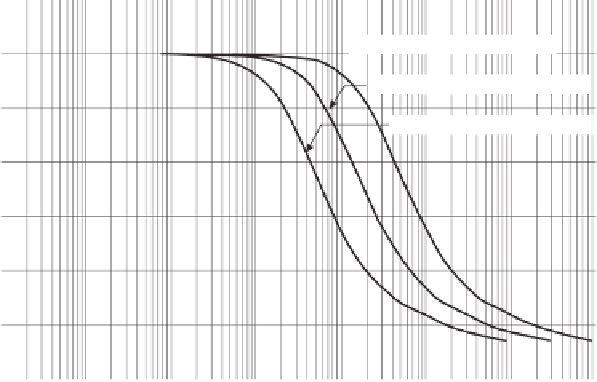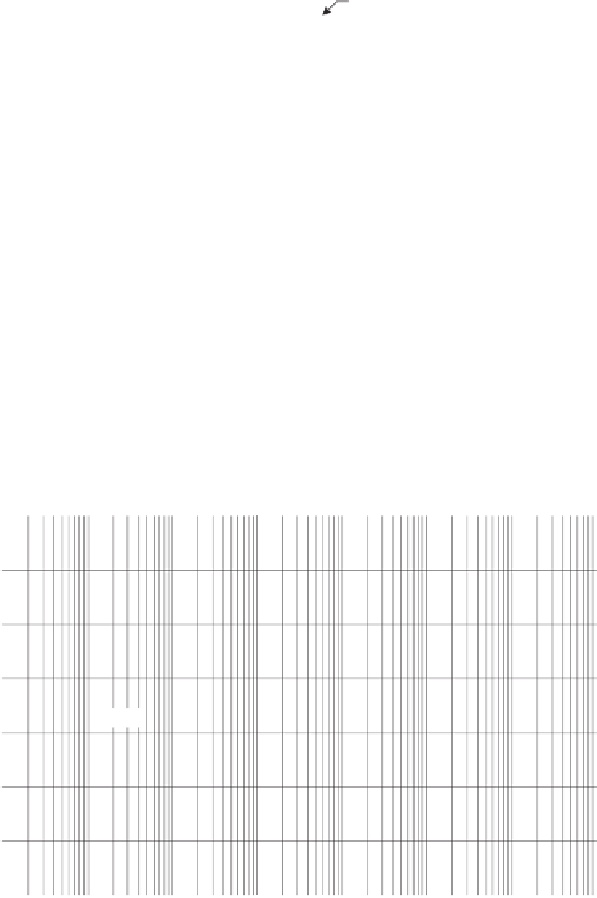Environmental Engineering Reference
In-Depth Information
70
a
= 3000 kPa; drying curve
60
a
= 948.7 kPa; median curve
50
a
= 300 kPa; wetting curve
40
30
20
10
0
10
6
0.1
1
10
100
1000
10,000
100,000
Soil suction, kPa
Figure 4.106
Comparison of drying curve, wetting curve, and median curve for soil with lateral
shift of 100% between drying and wetting curves (e.g., clay) and saturated gravimetric water
content of 60%.
70
a
= 3000 kPa; drying
a
= 948.7 kPa; median
a
= 300 kPa; wetting
a
= 200 kPa; drying
a
= 112.5 kPa; median
a
= 63.25 kPa; wetting
a
= 10 kPa; drying
a
= 7.50 kPa; median
a
= 5.623 kPa; wetting
Clay
60
50
Silt
40
Sand
30
20
10
0
10
6
0.1
1
10
100
1000
10,000
100,000
Soil suction, kPa
Figure 4.107
Comparison of three sets of drying curves, wetting curves, and median curves for
wide range of possible soils.
4.6.3 Estimation of Total Suction
Total suction is equal to the sum of the matric suction and
the osmotic suction. The osmotic suction is related to the
salt content of the pore-water. The salts generally remain in
the soil and as a result there is always an osmotic component
of suction in the soil. Even when the soil is fully saturated
with positive pore-water pressures, there is still an osmotic
suction in the soil. Therefore, the minimum total suction in
a soil is equal to the osmotic suction of the saturated soil.
The largest total suction in a soil is controlled by the
minimum possible vapor pressure in the air next to the soil.
The minimum vapor pressure corresponds to zero relative
humidity and Lord Kelvin's equation indicates that the
total suction goes to approximately 10
6
kPa. Lord Kelvin's
equation can also provide an estimation of the total suction
in any soil at equilibrium with a particular relative humidity
environment. For example, if a soil was left in a relative
humidity environment of 30% for a period of time, Lord
Kelvin's equation can be used to compute the equilibrium
total suction, which would be about 150,000 kPa. In other
words, the vapor pressure in the air surrounding a soil
becomes an equilibrium boundary condition for the soil.






























Search WWH ::

Custom Search